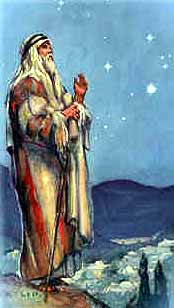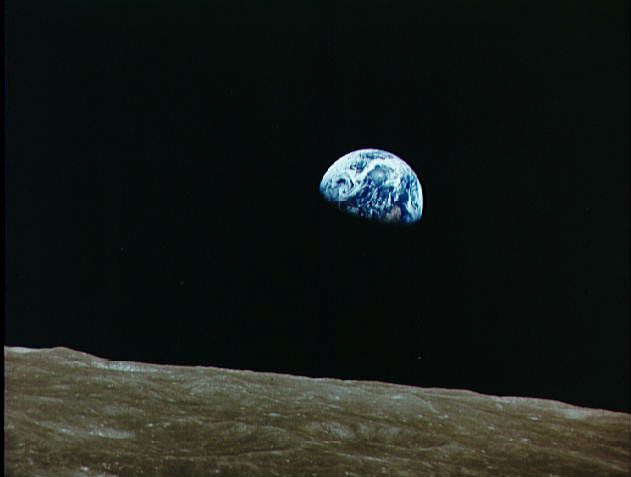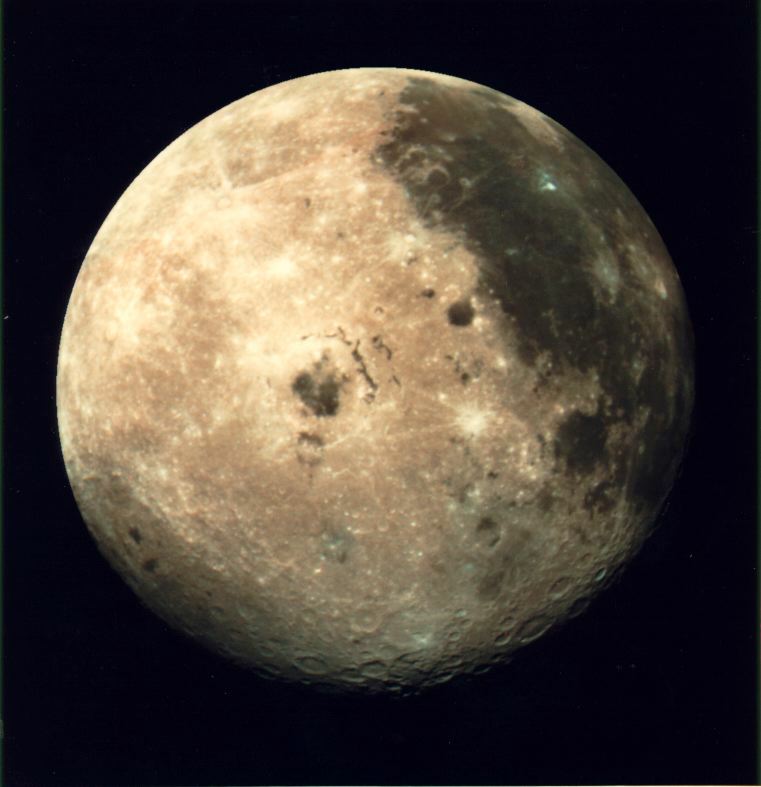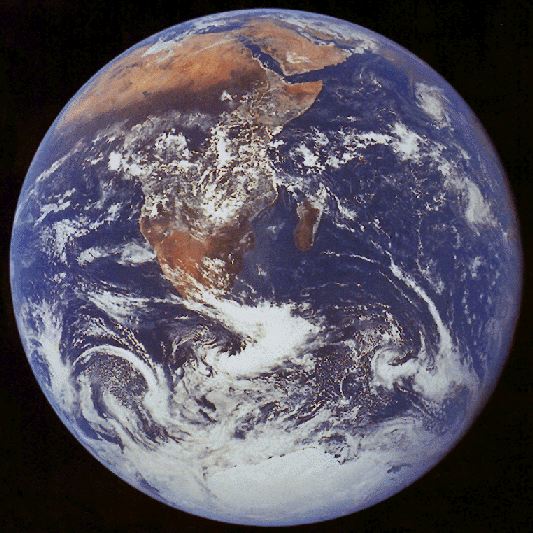
Reprinted from Meridian Magazine (9 Mar 2004)
©2004 by John P. Pratt. All rights Reserved.
| 1. Law and Order |
| 1.1 An Organized System |
| 1.2 Kepler's Three Laws |
| 1.3 Bode's Law |
| 2. Abraham's Truths |
| 2.1 Abraham's First Truth |
| 2.2 Abraham's Second Truth |
| 2.3 Abraham's Third Truth |
| Notes |
Is the universe ruled by intelligence or chance? Modern science is currently enamored with the theory that chance rules the universe, from the tiny atomic scales of quantum mechanics to our entire universe of the supposed "Big Bang." The Lord, however, has made it clear that intelligence governs. Even for believers, however, the question arises, "Just how much of a role does chance play?" For example, did our solar system form naturally according to God's laws from a condensing cloud of interstellar matter with planets having more or less random periods of rotation and revolution, or was it designed as a precision timepiece? This article proposes that Abraham's vision on astronomy (Abraham 3) is the key to understanding that the Lord designed our solar system to be a Great Timepiece.
When the anti-Christ Korihor refused to believe in God, Alma used the high degree of order found in the solar system as a proof of the existence of a Creator. Alma refuted Korihor's agnostic teachings by declaring, "all the planets which move in their regular form do witness that there is a Supreme Creator" (Alma 30:44). Atheists today would not be convinced by Alma's argument because most scientists believe that our solar system formed according to natural law and that all can be explained without God. Indeed, scientists have discovered many wonderful natural laws such as Kepler's laws and Newton's laws which the planets all faithfully follow. Computer studies have shown how a random collection of particles could form into a solar system, with a sun and planets very much like our own. So how would Alma's argument fare today, with new age atheists claiming that the solar system simply created itself, according to these apparently self existent laws of physics? Should the witness of the planets be relegated to an unenlightened age during which Korihor was forced to remain mute only because he didn't have today's scientific responses at the tip of this tongue? If Korihor had lived today, and had quoted all the modern laws of physics and principles of self-organization, could Alma have had an answer for him?
 |
The Lord has prophesied that
And also, if there be bounds set to the heavens or to the seas, or to the dry land, or to the sun, moon, or stars--
All the times of their revolutions; all the appointed days, months, and years, and all the days of their days, months, and years, and all their glories, laws, and set times, shall be revealed in the days of the dispensation of the fulness of times--
According to that which was ordained in the midst of the Council of the Eternal God of all other gods before this world was, that should be reserved unto the finishing and the end thereof... (D&C 121:30-32)
This passage makes it clear that the times of revolutions of the sun, moon, and stars have not only been appointed, but that their "set times" shall be revealed in this current dispensation. Moreover, even the timing of when those set times would be revealed was planned in the great Council before this world was created. Modern astronomers have discovered the periods of rotation and revolution of the planets in our solar system to a very high precision, which seems to qualify as at least partially fulfilling this prophecy that their times of revolutions would be revealed in our days. The keys to discovering the incredible order and precision of the solar system, however, and each of the "set times," are given in the great revelation on astronomy in the Book of Abraham.
Let us begin by discussing some of the ways that scientists recognize intelligent forces in action, review some examples of order found in our solar system, and then begin to explore in detail how the Book of Abraham unfolds the workings of the Lord's timepiece.
Of course, when scientists make the distinction between an intelligence and a natural law, they usually avoid the question, "Who wrote the laws of nature?" The scriptures tell us: "God ... hath given a law unto all things, by which they move in their times and their seasons" (D&C 88:41-42). Thus, in reality, at least two of the three explanations of order actually involve intelligence because God wrote the laws of nature.
Let us now discuss some of the higher order found in the solar system, and decide for ourselves whether or not it should be attributed to "natural laws," to mere chance, or to the hand of the Creator (D&C 59:21).
 |
Science and scripture agree on the explanation of this ordering: orbiting bodies all follow a law (D&C 88:42). Newton's laws of motion and his law of gravity explain all but the tiniest deviations in their orbits, and Einstein's modifications account for the rest. Thus, these laws greatly simplify God's creative work, because his law includes self-organization. That is, even if one starts with a random accumulation of particles, there will almost always be some amount of spinning of the group as a whole. As the particles interact with each other, they will tend to fall into the plane of rotation and stay there in an orbit as the gravitational force toward the center is balanced by the inertial reaction away from it.
 |
 |
There is one important area, however, where most scientists have not noticed any order and therefore have not needed to explain it. That is in the precise periods of revolution of the planets around the sun. Both the earth's period of rotation (the day) and of revolution (the year) have been assumed to be simply random periods of time, determined by whatever chance initial angular momentum our planet happened to have when the solar system formed. Similarly, the periods of revolution of all of the planets are thought to be essentially random numbers, except for being within approximate whole-number ratios. Interestingly, that is precisely the area where the Lord revealed to Abraham that there is a high degree of order designed into our system. Let us now look in detail at what is contributed to this subject by the Book of Abraham.
 |
And I saw the stars, that they were very great, and that one of them was nearest unto the throne of God; and there were many great ones which were near unto it;
And the Lord said unto me: These are the governing ones; and the name of the great one is Kolob, because it is near unto me, for I am the Lord thy God: I have set this one to govern all those which belong to the same order as that upon which thou standest.
And the Lord said unto me, by the Urim and Thummim, that Kolob was after the manner of the Lord, according to its times and seasons in the revolutions thereof; that one revolution was a day unto the Lord, after his manner of reckoning, it being one thousand years according to the time appointed unto that whereon thou standest. This is the reckoning of the Lord's time, according to the reckoning of Kolob. (Abraham 3:2-4)
Here we are given a great truth, directly from the Creator, who told us what would otherwise be incredibly hard to discover by ourselves. The period of one earth year (365.242 days) is not a random number at all, but was designed to be such that 1,000 of our years is equal to a day of the Lord. Scientists may not have even discovered Kolob yet, much less its period of revolution. And if we had, how could we know that the earth's orbit was designed such that 1,000 years is one revolution of Kolob, rather than it just being a chance coincidence? The place where the Lord's revelations are the most important seems to be in the areas where man could never discover those truths by himself.
Although we have been told elsewhere that a day unto the Lord is as a thousand years (2 Peter 3:8), one could get the impression that a "day of the Lord" might be a vague term, meaning simply a "long time." When Abraham actually saw Kolob, and heard the Lord explain the design, he must have clearly understood that one revolution of Kolob precisely determines one day of the Lord, even as one rotation of the earth determines one day on earth.
Kolob, which governs all of the stars of the order to which we belong, apparently also is the master clock of the entire order. It is "first in government, the last pertaining to the measurement of time" (Fac. 2, Fig. 1). As an example of Kolob being a time standard, we are told that, "Oliblish, which is the next grand governing creation" has a time period "which is equal with Kolob in its revolution and in its measuring of time" (Fac. 2, Figs. 2, 4). Thus, Kolob is like the heart of the order of stars to which we belong. It both governs the order, and its heartbeat rate is the time regulator even as a quartz crystal regulates our watches.
Thus, let us summarize this information as Abraham's First Truth:
One revolution of Kolob is one day unto the Lord, being 1,000 earth years.
The significance is that the length of the year is not a random unit of time, but was designed to be 1/1,000th of one day of the Lord. We are not told the precision of this statement, so it is not clear whether a revolution of Kolob is 365,242 earth days, or perhaps 365,000. The important point here is that the length of our year is not a random number but was carefully designed.
|
The Lord showed Abraham more of the workings of our solar and stellar systems. Abraham was given to know the "set times" of the sun, moon, and earth:
And the Lord said unto me: The planet which is the lesser light, lesser than that which is to rule the day, even the night, is above or greater than that upon which thou standest in point of reckoning, for it moveth in order more slow; this is in order because it standeth above the earth upon which thou standest, therefore the reckoning of its time is not so many as to its number of days, and of months, and of years.
And the Lord said unto me: Now, Abraham, these two facts exist, behold thine eyes see it; it is given unto thee to know the times of reckoning, and the set time, yea, the set time of the earth upon which thou standest, and the set time of the greater light which is set to rule the day, and the set time of the lesser light which is set to rule the night. (Abr. 3:5-6)
Let us restate this as Abraham's Second Truth:
There are set times for the earth, moon and sun which were designed to reckon time.
What does "set time" mean? Grant Athay, one of the first L.D.S. astronomers to attempt any interpretation at all of the Book of Abraham, tentatively proposed a meaning for the set times of the earth, moon and sun. He said he suspected that the set time of the earth refers to the day, the set time of the moon to the lunar month, in which the moon completes its cycle of phases, and the set time of the sun to the tropical year, in which the sun makes its annual excursion through the north and south parts of the sky, causing the seasons. However, he took that interpretation no further, noting that, "Those parts of the Book of Abraham that discuss set periods of time for the sun, moon, and planets do not invoke a strong interest from astronomers."[4] He must be correct, because very few other professional astronomers have commented at all on the Book of Abraham.
|
 |
The importance of Abraham's Second Truth is that no one needs to apologize for the Hebrew calendar being more complicated than our simple (Gregorian) solar calendar. It is the result of design, not chance. Moreover, the Designer seems to be using such a lunisolar calendar, as we would expect. That is, many key events in religious history have occurred on days of the Hebrew calendar which the Lord has designated as holy, as I have discussed at length in my other articles.[6]
The set time of the Earth. The set time of the earth apparently refers to the mean solar day. The day is a very stable unit of time because the rotating earth is such a good clock that it only slows down by about 1.5 milliseconds (thousandths of a second) per century.[7]
 |
The set time of the sun. Abraham also knew the set time of the sun, which apparently means the length of the seasonal year. Our best modern estimate for a historical average is 365.2425 days,[10] which is the value used in our modern Gregorian calendar.
 |
The reason for this difference in stability might be worth noting because it again suggests design in the solar system. Various frictional effects, especially the tides, cause the earth to slow down in its rotational speed very slightly, causing the day to lengthen by about 0.0015 seconds every century. That effect causes the length of the year as measured in days slowly to decrease because the number of rotations of the earth is less in every orbital revolution, meaning a smaller number of days per year. There is also another effect equally as important to the length of the year. As the earth encounters frictional drag from encountering particles in its path as it speeds around the sun, it loses energy and the distance to the sun sightly decreases (by less than an inch per year), which also causes the length of the year to shorten by about the same amount caused by the lengthening of the day. Thus the two effects combine to double the shortening rate of the length of the year as measured in mean solar days.
On the other hand, as the tides slosh around, they tend always to rotate ahead of the moon which is causing them, and this effect actually accelerates the moon in its orbit around the earth, causing the moon slowly to recede from the earth. This effect slowly increases the length of the month and tends to compensate for the lengthening of the day. In other words, even though the length of the month is getting longer, so also is the length of the day, so that the number of days in a month is nearly constant. Hence, the month is a much better length of time on which to base a calendar than is the sun, which again points to the Hebrew lunisolar calendar as being inspired by the Designer.[11] So far, however, the atheist will not be impressed with the "set times" of the earth, moon and sun, because they still appear to be random numbers. It is as we explore the Third Truth that the design of the "set times" will become more apparent.
"Now the set time of the lesser light is a longer time as to its reckoning than
the reckoning of the time of the earth upon which thou standest.
And where these two facts exist, there shall be another fact above them, that
is, there shall be another planet whose reckoning of time shall be longer still;
And thus there shall be the reckoning of the time of one planet above
another, until thou come nigh unto Kolob, which Kolob is after the reckoning of
the Lord's time..."
(Abr. 3:7-9)
Let us restate this concept more briefly as Abraham's Third Truth:
The planets form a progression of increasing set times, designed to reckon time, beginning with the earth and moon and ending with Kolob.
|
 |
The year can be thought of two different ways. It can be thought of as the period of the sun's annual motion through the sky which causes the seasons, which is the view of the Book of Abraham. We moderns tend to think of the year as the period of the earth's orbit around the sun, rather than the sun's motion relative to the earth. These are simply two ways at looking at the same relative motion. The Lord is explaining that the system was set up to be viewed from the earth, and that the period of one earth year is referred to as the "set time" of the sun.
Abraham was shown the governing stars near to the throne of God, and they were a long way away from the earth. Clearly, Abraham did not think that the earth was the center of the universe, for it was dwarfed by the brilliant stars near to the throne of God. It is Kolob, which is near the center of government and of time-keeping, which is most likely also near the center of the Lord's creations. The prophets have long known that "it is the earth that moveth and not the sun" (Hel. 12:15). The Lord was merely explaining that the Great Timepiece of the solar system was designed to be viewed from the earth.
Next month's article will take a detailed look at the planetary progression in our solar system, referred to in Abraham's Third Truth, which progression also continues with certain stars, until we come nigh unto Kolob.